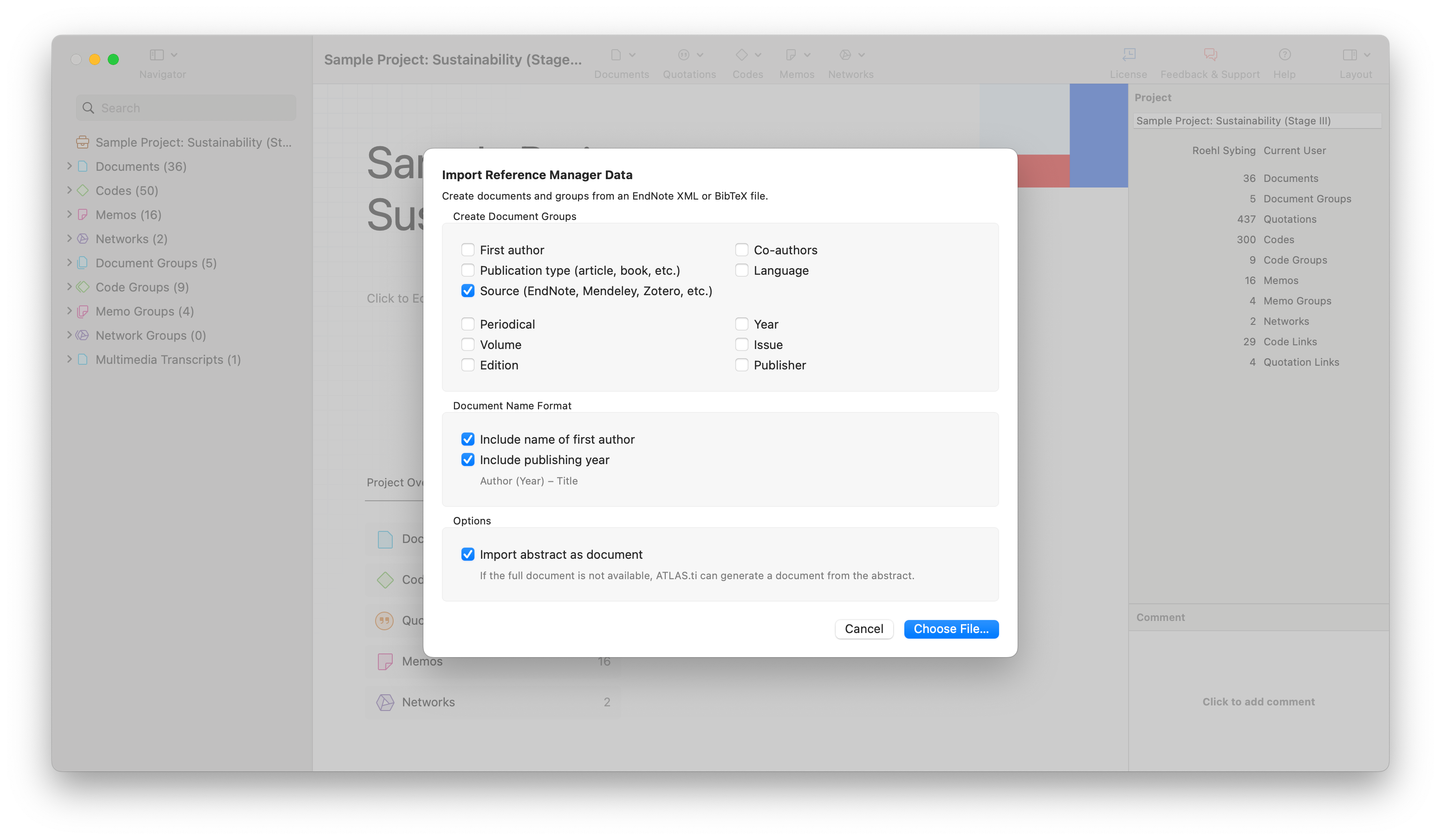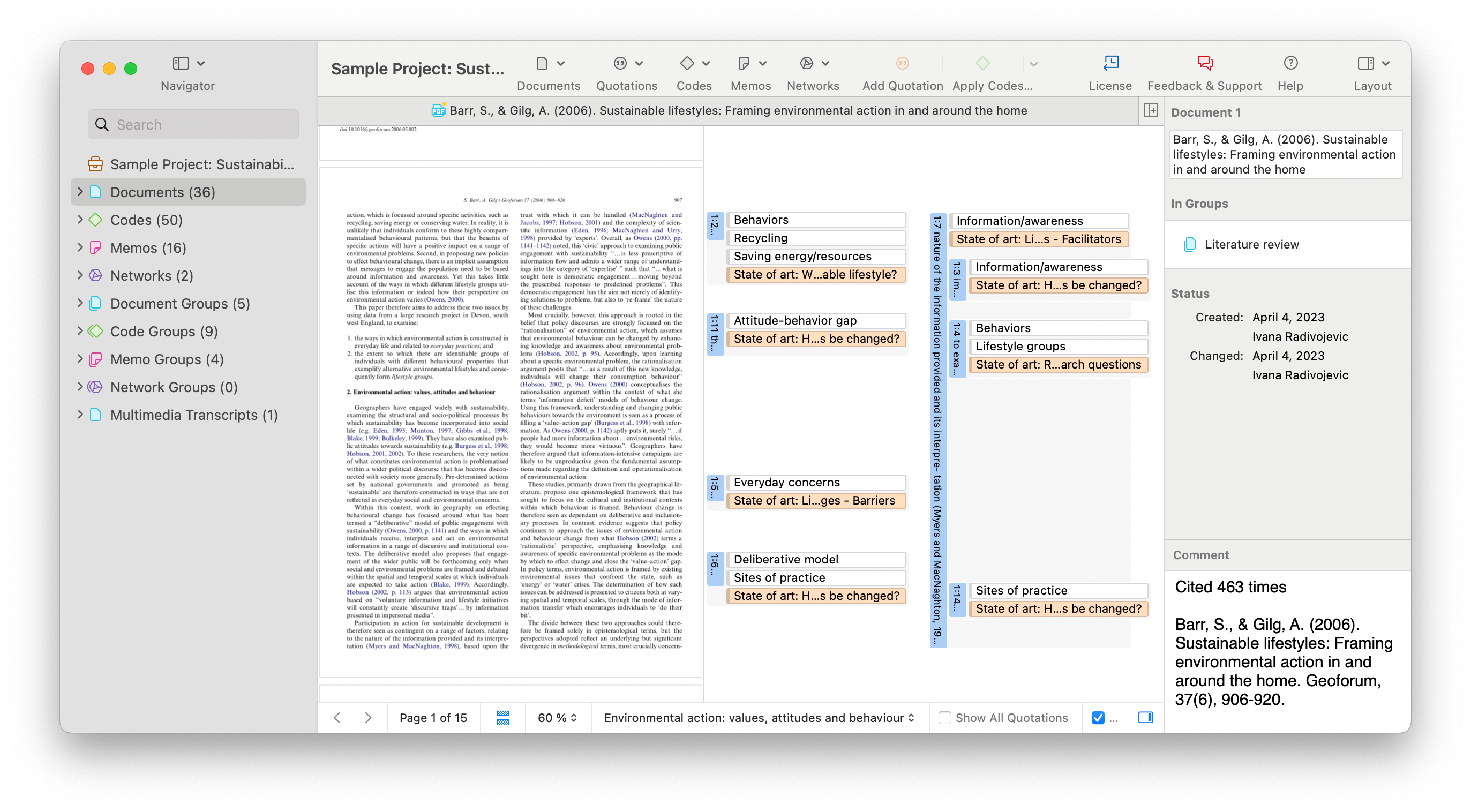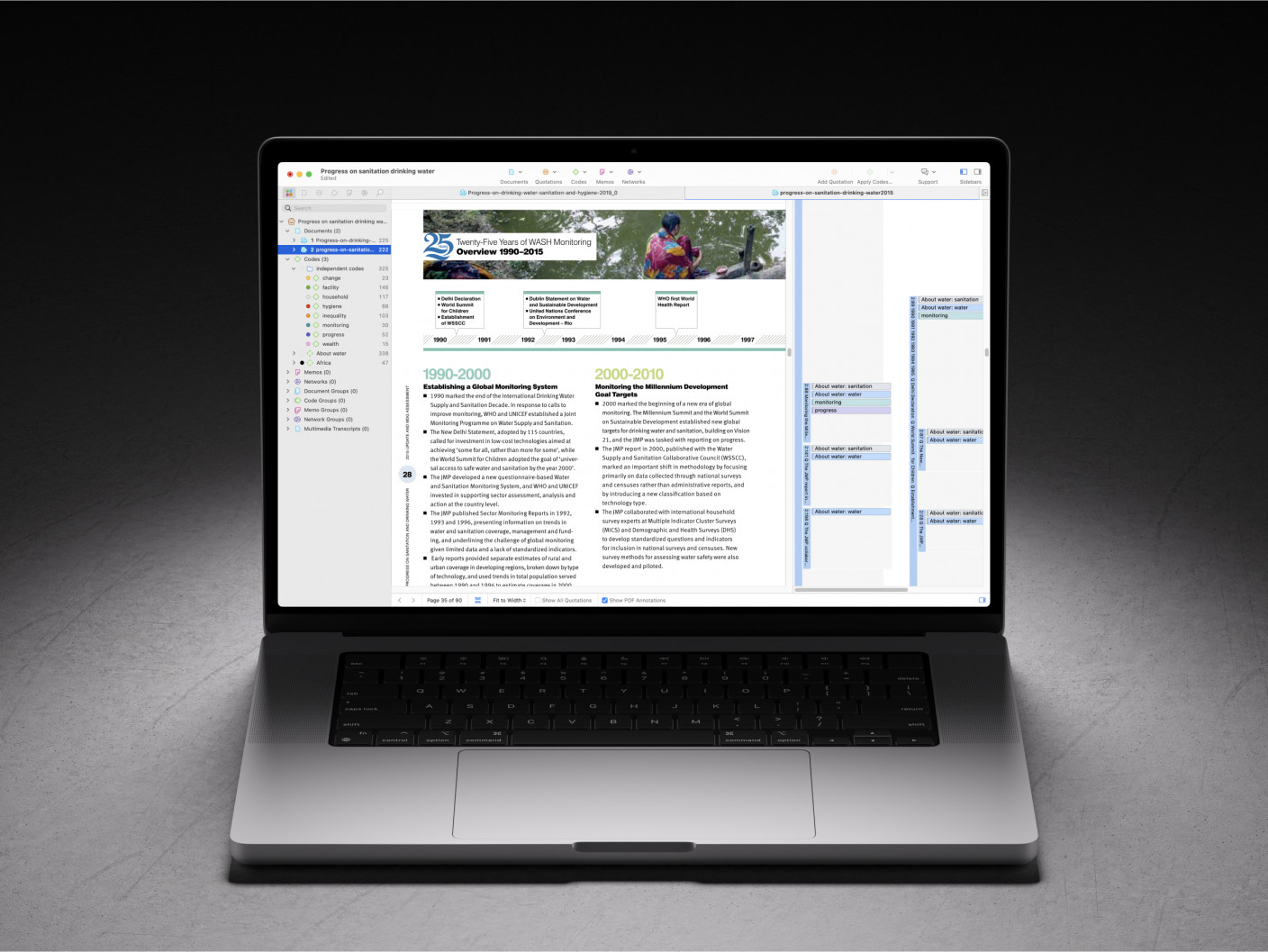Handle Citations with Reference Data Management
- Introduction
- What is the need for reference management?
- How do you manage references?
- What is reference management software?
- Using ATLAS.ti as research management software
Introduction
For many researchers, a citation manager or reference management tool is an important component of the research process. Whether you are compiling research papers, book chapters, web pages, and other scholarship for a literature review or adding citations to your written research reports, consider using reference management tools to build your reference library. This kind of personal research assistant can save you time in the research process.
This article looks at the role of reference management software in qualitative research and how ATLAS.ti can help you collect references and organize research for a meaningful and robust research inquiry.

What is the need for reference management?
Reference management brings order to the potential chaos of handling numerous sources. Scholars need the ability to quickly access, cross-reference, and accurately cite information. Synthesizing existing research and connecting it to new knowledge are key requisites for academic rigor and integrity.
A robust reference management system streamlines the research process by keeping track of all sources, thus preventing plagiarism and ensuring that proper acknowledgments are made in scholarly work. It's also important for teamwork, allowing for shared access to reference materials, which is increasingly important in collaborative research environments.
At the core, reference management supports the researcher’s credibility. Proper citation practices, facilitated by these tools, respect intellectual property and anchor research in a trustworthy context. In essence, an organized reference database is not a mere convenience; it's a fundamental aspect of responsible research practice.
How do you manage references?
Managing references effectively is key to maintaining the integrity and quality of research. Citation managers and reference managers can organize large libraries of journal articles, book chapters, and other sources of scholarly information in order to give researchers access to the most relevant materials quickly and easily.

But what is a reference? The rest of this section will outline what a reference looks like so we can discuss how references are managed.
What are the characteristics of reference data?
Reference data must be comprehensive and precise to enable clear identification and retrieval of sources. This includes the author(s), title, publication year, publisher, volume and issue number, page numbers, and digital identifiers such as DOIs or URLs. The details must be accurate to ensure proper attribution and to help other researchers locate the original sources.
What is an example of reference data?
Consider a journal article by Jane Doe on climate change. The reference data might look like this:
Doe, J. (2023). "Climate Change Impact on Coastal Ecosystems." Environmental Research Journal, 57(2), 200-220. doi:10.XXXX/ERJ.20XX.11223344.
In this example, every element serves to uniquely identify the source: Doe’s name as the author, the article title, the journal in which it was published, the volume and issue where it can be found, the page range, and the DOI, which provides a link to the content.
Managing references involves cataloging such details for all sources relevant to your research. By maintaining a structured and detailed repository of reference data, researchers ensure that they can always support their findings with the appropriate sources and that these sources can be shared and verified within the academic community.
How are references used?
First and foremost, references are the foundation from which literature reviews are conducted so that the state of art of knowledge in the field can be developed. In addition, managing references provides an organized database with the necessary details to write reference information.
When citing published studies, writers of research need to reference the authors who published their research and the year in which they published it. Research reports also come with a bibliography or list of references, which should list the titles of each referenced article, the journals they belong to, and the DOI numbers that readers can use to gain access to the references.
Reference management software is essential in the world of research and academic writing. It is a specialized tool designed to organize and manage references, which are the backbone of scholarly work.

In the digital age, where information is abundant and sources are vast, such software becomes an invaluable asset in a researcher's toolkit.
Should I use a reference manager?
The decision to use reference management software hinges on the volume and complexity of research one engages with. For students and professionals who handle multiple papers, projects, or publications, a reference manager is a necessity for effectively managing all that information to demonstrate expertise or at least a comprehensive knowledge of a given research inquiry.
It helps in compiling and organizing research materials, providing quick access to sources, and ensuring that the referencing in manuscripts is accurate and consistent. Reference managers can often be linked with writing software (such as Microsoft Word) to automatically insert and format references according to whichever style the researcher specifies (e.g., reference formats such as APA, Harvard, or Chicago style). In a collaborative research setting, it becomes even more critical as it ensures that all team members are synchronized in their use of references and citations.
What's the best reference manager?
Selecting the best reference management software is not a simple choice. There are many tools to choose from, including Zotero, EndNote, and Mendeley.
Zotero has a user-friendly interface and web-based browser integration, making the collection of references as simple as clicking a button. Users can view their Zotero library in desktop software or in the web interface through their online account seamlessly.
EndNote for desktops and EndNote Web allow for complex document creation, widely adopted for their powerful features and integration with databases and library catalogs. Like with other platforms, EndNote can produce references in a variety of output styles depending on the needs of the researcher.
Mendeley doubles as a social network for researchers, facilitating collaboration and discovery of research trends. Mendeley allows users to import records, create bibliographies, and share references with other researchers.
The ideal choice balances factors such as the capability to import references directly from other platforms, citation style flexibility, database connectivity, and collaborative functionality. Other considerations such as operating system support, attachment of associated files, and the ability to export references can be valuable to researchers who need such capabilities.

What's the difference between a reference manager and a citation manager?
The terms "reference manager" and "citation manager" often converge in their functionality, but they originated with distinct purposes. A reference manager is a comprehensive system that stores bibliographic information, allowing for the organization, annotation, and retrieval of references.
Citation managers, on the other hand, focus on inserting citations into written work and formatting bibliographies according to various style guides. Modern reference management software, however, tends to encapsulate both functions, presenting an all-in-one solution that assists researchers from the point of gathering sources to the final citation process in a document.
The software streamlines the meticulous task of citation formatting, adapting to numerous citation styles such as APA, MLA, or Chicago, often with just a few clicks. Integration with word processors enhances its utility, enabling the "cite-while-you-write" feature, which automatically inserts in-text citations and updates bibliographies in real time.
For researchers juggling a plethora of articles, books, and digital content, reference management software becomes a central hub for all things citation-related. It can dramatically cut down the time spent on formatting and re-formatting references, which allows researchers to invest more time in the actual research and analysis. Whether managing a small project or a comprehensive systematic review, the software provides a structured and reliable method for handling the scholarly information essential for academic success.
Using ATLAS.ti as research management software
ATLAS.ti serves as a comprehensive research management software, particularly beneficial in qualitative analysis. Its utility extends into the domain of reference management, where it can be used to import, organize, and analyze bibliographic data. This comprehensive approach allows for an in-depth engagement with the literature that underpins a research project.
Collecting references
In the initial phase of research, ATLAS.ti helps in systematically organizing collected references. Literature and other sources of information, including audiovisual files, can be imported and managed in ATLAS.ti.
The software can be used to organize these references in a way that aligns with the overarching themes and categories of the research project. Researchers can tag and annotate entries, enriching the bibliographic data with insights and notes pertinent to their analysis.
Importing references
The process of importing references into ATLAS.ti is designed to be intuitive and accommodates data from various reference managers. Researchers often begin with references organized in software like Zotero or EndNote. ATLAS.ti can import data from these programs, through EndNote XML files or bibtex files, which permits researchers to import references from just about any reference manager software.

Once the data is imported, ATLAS.ti allows for the integration of these references into the qualitative data analysis workflow. This integration enables researchers to draw direct connections between their source materials and the evolving themes and patterns in their data. If you have already highlighted or written comments on the PDFs of your literature sources, these will also be automatically imported and conveniently converted into quotations and comments so you can pick up right where you left off.
Analyzing references
ATLAS.ti facilitates a deeper analysis of references. It goes beyond mere cataloging by allowing researchers to interact with the content of their sources. The literature can be read and manually analyzed, and researchers can also harness of a range of AI-powered tools to automatically analyze aspects of their literature. Data analysis tools can also be used to create visual displays of the literature.
References can be coded, and annotations can be added, making it possible to integrate the literature review directly with the data analysis. This creates a dynamic library where references are not static but are active components of the research process.

Citing references
ATLAS.ti can prepare researchers for the citation process by organizing references in conjunction with their qualitative data. The insights garnered from the integration of reference management and data analysis within ATLAS.ti can then be translated into academic writing.
For the actual citation, researchers can export a list of references from ATLAS.ti for use in papers and presentations. Comments can be written on documents to include supplementary information such as citations and then exported as a spreadsheet or text document.




